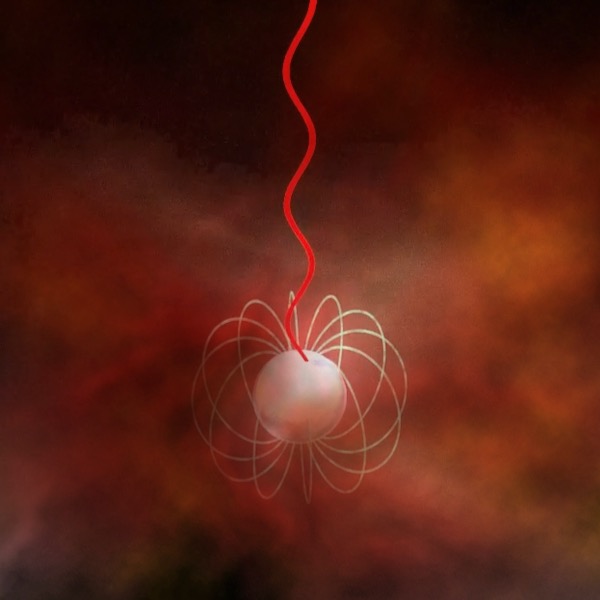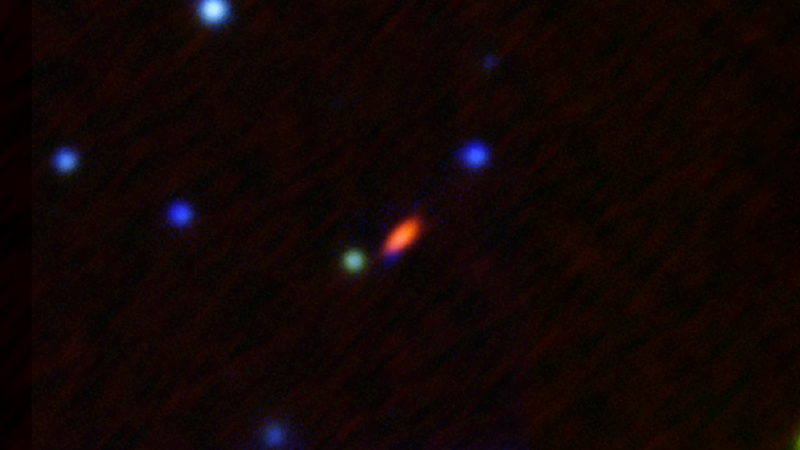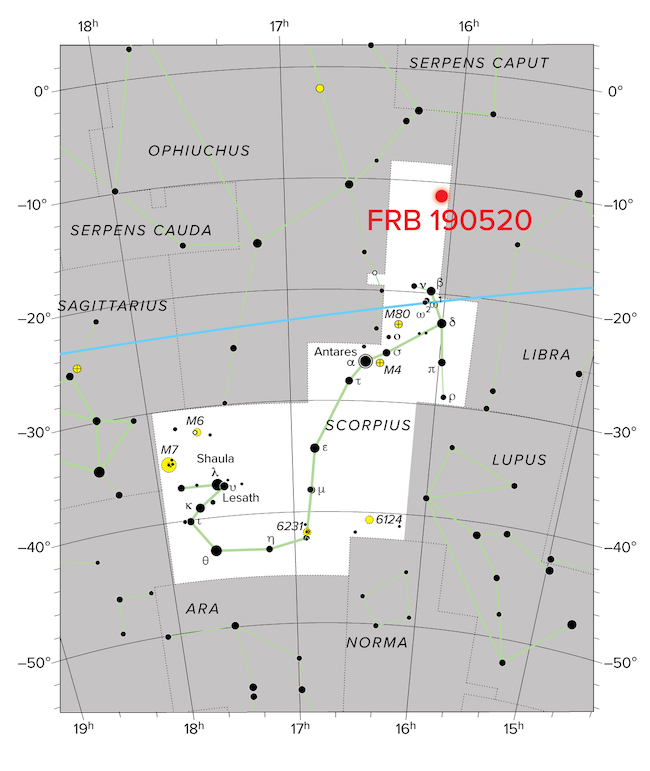
One of the most unusual cosmic phenomena seen in recent years – first discovered in 2007 – are the Fast Radio Bursts, aka FRBs. They’re reminiscent of pulsars in that we see them emit intense bursts of radio waves. But they’re known to be located far outside our Milky Way galaxy. So the bursts must be, inherently, much stronger. Also, astronomers have seen most Fast Radio Bursts emit a burst only once. But this month (June 8, 2022) they announced a highly active, repeating Fast Radio Burst, which also appears to produce weaker but persistent radio emission between the bursts. It’s only the 2nd example they’ve found of this odd sort of Fast Radio Burst.
The Five-hundred-meter Aperture Spherical radio Telescope (FAST) first discovered this odd Fast Radio Burst – called FRB 190520 – in 2019.
More recently, scientists used the National Science Foundation’s Karl G. Jansky Very Large Array (VLA) and other telescopes to further study the FRB and pinpoint its location. It is, indeed, a long ways away, residing in the outer fringes of a dwarf galaxy nearly three billion light-years from our solar system. Most seen so far have been in intergalactic space – not in a galaxy but between the galaxies – and they’re thought to originate from up to billions of light-years away.
The researchers published a new peer-reviewed paper detailing the findings in Nature on June 8, 2022.
A rare repeating Fast Radio Burst
Astronomers saw the first major burst from FRB 190520 on May 20, 2019. Subsequent observations showed that this FRB was one of the few known FRBs that repeats. In addition, it is only the 2nd-known FRB that repeats and also exhibits on-going weaker bursts in-between the primary larger ones. This raises more questions about the nature of these objects.

It is similar to the first FRB, called FRB 121102, for which astronomers determined the location several years ago. One of the lead authors, Casey Law at Caltech, stated:
These characteristics make this one look a lot like the very first FRB whose position was determined – also by the VLA – back in 2016. Now we have two like this, and that brings up some important questions.
2 kinds of FRBs?
In recent years, astronomers say they have found that there seem to be two kinds of FRBs, ones that repeat and others that don’t. Why? That is a question they are still trying to answer, and FRBs like FRB 190520 and FRB 121102 should help astronomers figure out what’s going on. As Kshitij Aggarwal, a graduate student at West Virginia University (WVU), asked:
Are those that repeat different from those that don’t? What about the persistent radio emission, is that common?
The researchers suggest two possibilities. In one scenario, there may be two different mechanisms at play. These could produce two completely different kinds of FRBs. In the other, they are the same kind of FRB, but exhibit different behaviors at different stages of their evolution.

So which explanation best fits the observations? To answer that, astronomers still need to determine the source(s) of FRBs. Right now, the leading candidates range from superdense neutron stars or neutron stars with ultra-strong magnetic fields, called magnetars. Astronomers are still debating which it is.
Is fast radio burst FRB 190520 a newborn?
Based on current data, the researchers think that FRB 190520 may be a “newborn” FRB. Astronomers say it might still be surrounded by the gas and dust formed from the supernova explosion that created the neutron star. That material then gradually dissipates over time. As it does, the number of bursts also declines.
If that is correct, then younger FRBs might be defined by being much more active, with more bursts. The bursts then become fewer as the FRB ages.
Measuring distances to FRBs
This tentative conclusion is based on observations of FRB 190520 related to an effect called dispersion measure. That is a technique where astronomers analyze the effects of intervening material on radio waves emitted by distant objects. The analysis tells scientists more about the composition of the material. The technique is used to measure the distances to pulsars.
This doesn’t work for FRB 190520, however. The burst’s signal indicated an amount of dispersion equal to a distance of about eight to nine and a half billion light-years. On the other hand, when astronomers calculated the distance to the FRB using the Doppler effect of the host galaxy’s light, they came up with three billion light-years. Why? Aggarwal said:
This means that there is a lot of material near the FRB that would confuse any attempt to use it to measure the gas between galaxies. If that’s the case with others, then we can’t count on using FRBs as cosmic yardsticks.

So, while that material may hamper measuring the distance to the FRB, it also provides clues as to how old the FRB is.
New insights into FRBs
The new observations of FRB 190520 provide fascinating insights into the nature of FRBs. Sarah Burke-Spolaor at WVU noted:
The FRB field is moving very fast right now and new discoveries are coming out monthly. However, big questions still remain, and this object is giving us challenging clues about those questions.
Bottom line: Astronomers say they have observed an unusual repeating fast radio burst – only the second so far – where smaller bursts persistently occur in-between the large bursts. The results suggest that younger FRBs may be more energetic, with much more frequent bursts compared to older FRBs.
Source: A repeating fast radio burst associated with a persistent radio source
Via National Radio Astronomy Observatory
The post Odd Fast Radio Burst only 2nd known of its kind first appeared on EarthSky.
0 Commentaires